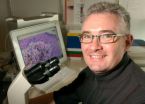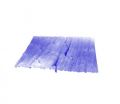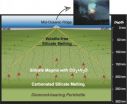(Press-News.org) A team of scientists has developed a playbook for ending the devastating impact of fibrotic diseases of the liver, lung, kidney, and other organs, which are responsible for as many as 45 percent of all deaths in the industrialized world. Despite the prevalence of these illnesses, which are caused by buildup of scar tissue, there are no approved antifibrotic drugs on the market in the U.S. A top fibrosis expert from the Icahn School of Medicine at Mount Sinai and three other institutions have described drug targets and compounds they hope will prove broadly effective in an article, "Therapy for Fibrotic Diseases: Nearing the Starting Line," appearing in the January 9 issue of Science Translational Medicine.
Scientists and drug companies are taking important steps to address the unmet need for fibrosis treatments. Among other advances, researchers have discovered and started to validate biomarkers that will facilitate testing of new drugs in clinical trials, according to the article.
"The insights we have described lay the groundwork for a new understanding of treatment approaches and diagnostics," said Scott Friedman, MD, the Dean for Therapeutic Discovery at Mount Sinai and lead author of the article. Diseases such as pulmonary fibrosis, renal fibrosis and hepatic cirrhosis represent "a huge unmet medical need," said Dr. Friedman, who is also the Director of the Division of Liver Diseases and its Centers for Fibrosis Research and Alcohol Liver Disease. "New treatments that are already in clinical trials exemplify a range of strategies harnessed by several pharmaceutical and biotechnology companies."
In the past, the fibrosis field has suffered from a lack of communication among disease experts focused on individual organs, and scientists did not fully consider similarities in cellular dysfunction found in all fibrotic diseases. However, growing synergies across medical specialties have sharpened the perspective on how fibrotic diseases are triggered by injury to epithelial tissues—the layers of densely packed cells that line all the organs of the body.
Recent research has produced a more coherent, comprehensive view of how these tissue injuries provoke dysregulation of cell differentiation, signaling, and protein secretion, Dr. Friedman said. "Investigators across the field are putting aside organ-centric views and coming up with what we think are the overarching characteristics of fibrosis. Understanding how the disease develops can help us diagnose and treat it, regardless of where in the body the fibrotic tissue presents," said Dr. Friedman, who co-authored the review article with colleagues from the University of California, San Francisco, the University of Washington, Seattle and Biogen Idec, based in Cambridge, Mass.
Dr. Friedman estimated that hundreds of clinical trials are currently underway, testing dozens of antifibrotic drugs. Some of the most promising studies focus on blocking a pathway driven by a molecule known as TGFß, which was identified more than 20 years ago as a central mediator of fibrosis. While there have been concerns that inhibiting this pathway could also impair the healthy process of tumor suppression, authors of the article describe several promising experimental drugs, including a variety of humanized antibodies developed by Genzyme, Eli Lilly, and Biogen Idec.
Following a different strategy, Gilead Sciences is using antibodies to block an enzyme that promotes cross-links among proteins in scar tissue. Such cross-linking is thought to stiffen the scar and hamper normal tissue repair and scar resolution. A third approach, explored by Genentech, Novartis, MedImmune and Sanofi, targets cytokines, or messenger chemicals, IL-4 and IL-13, which regulate fibrosis in several animal models.
"This is really the tip of the iceberg," said Dr. Friedman. "In all likelihood, a large number of clinical trials will follow, built, in part, on the lessons learned through these studies."
"We hope our publication will serve as a template, not just for investigators, but for drug companies that are starting to inch into this space," said Dr. Friedman, who was the first scientist to isolate and characterize the hepatic stellate cell, the key cell type responsible for scar production in liver. "Our intention was to capture the leading edge of the science and also to provide pointers for how to move the field forward."
Researchers in this area face a number of hurdles. One challenge, for example, involves developing an appropriate design for clinical trials in illnesses such as hepatic cirrhosis, which involves scarring of the liver over as much as 30 years. "If a trial lasts only one or two years in a disease that affects patients for decades, developing measurements that accurately reflect the disease is difficult," Dr. Friedman noted. "This really represents the current Achilles' heel in trial design, which could be overcome with better methods to detect improvements following therapy."
###
Dr. Friedman receives financial compensation as a consultant for the following companies mentioned above: Biogen Idec, Genzyme, Genentech (Roche Group), Gilead Sciences, Novartis and Sanofi. Additionally, Dr. Friedman is a named inventor and receives royalty payments on inventions licensed by the Icahn School of Medicine at Mount Sinai to F. Hoffman-La Roche (Roche Group) and Novartis.
About The Mount Sinai Medical Center
The Mount Sinai Medical Center encompasses both The Mount Sinai Hospital and Icahn School of Medicine at Mount Sinai. Established in 1968, Mount Sinai School of Medicine is one of the leading medical schools in the United States. The Medical School is noted for innovation in education, biomedical research, clinical care delivery, and local and global community service. It has more than 3,400 faculty in 32 departments and 14 research institutes, and ranks among the top 20 medical schools both in National Institutes of Health (NIH) funding and by U.S. News & World Report.
The Mount Sinai Hospital, founded in 1852, is a 1,171-bed tertiary- and quaternary-care teaching facility and one of the nation's oldest, largest and most-respected voluntary hospitals. In 2012, U.S. News & World Report ranked The Mount Sinai Hospital 14th on its elite Honor Roll of the nation's top hospitals based on reputation, safety, and other patient-care factors. Mount Sinai is one of 12 integrated academic medical centers whose medical school ranks among the top 20 in NIH funding and by U.S. News & World Report and whose hospital is on the U.S. News & World Report Honor Roll. Nearly 60,000 people were treated at Mount Sinai as inpatients last year, and approximately 560,000 outpatient visits took place.
For more information, visit: http://www.mountsinai.org/.
Find Mount Sinai on:
Facebook: http://www.facebook.com/mountsinainyc
Twitter: @mountsinainyc
YouTube: http://www.youtube.com/mountsinainy END
Researchers in California and Switzerland have discovered that melanomas that develop resistance to the anti-cancer drug vemurafenib (marketed as Zelboraf), also develop addiction to the drug, an observation that may have important implications for the lives of patients with late-stage disease.
The team, based at the University of California, San Francisco (UCSF), the Novartis Institutes for Biomedical Research (NIBR) in Emeryville, Calif., and University Hospital Zurich, found that one mechanism by which melanoma cells become resistant to vemurafenib also renders them ...
What if you had a "Wayback Television Set" and could watch an entire month of ancient prehistory unfold before your eyes in real time? David Rubin of the U.S. Department of Energy's Lawrence Berkeley National Laboratory (Berkeley Lab) presented just such a scenario to the American Astronomical Society (AAS) meeting in Long Beach, CA, when he announced the discovery of a striking astronomical object: a Type Ia supernova with a redshift of 1.71 that dates back 10 billion years in time. Labeled SN SCP-0401, the supernova is exceptional for its detailed spectrum and precision ...
Spin and bias exist in a high proportion of published studies of the outcomes and adverse side-effects of phase III clinical trials of breast cancer treatments, according to new research published in the cancer journal Annals of Oncology [1] today (Thursday).
In the first study to investigate how accurately outcomes and side-effects are reported in breast cancer trials, researchers at the Princess Margaret Cancer Centre and University of Toronto (Toronto, Canada) found that in a third of all trials that failed to show a statistically significant benefit for the treatment ...
This press release is available in German.
Dental microwear, the pattern of tiny marks on worn tooth surfaces, is an important basis for understanding the diets of fossil mammals, including those of our own lineage. Now nanoscale research by an international multidisciplinary group that included members of the Max Planck Institute for Evolutionary Anthropology in Leipzig has unraveled some of its causes. It turns out that quartz dust is the major culprit in wearing away tooth enamel. Silica phytoliths, particles produced by plants, just rub enamel, and thus have ...
A landmark discovery about how insulin docks on cells could help in the development of improved types of insulin for treating both type 1 and type 2 diabetes.
For the first time, researchers have captured the intricate way in which insulin uses the insulin receptor to bind to the surface of cells. This binding is necessary for the cells to take up sugar from the blood as energy.
The research team was led by the Walter and Eliza Hall Institute and used the Australian Synchrotron in Melbourne, Australia. The study was published today in the journal Nature.
For more ...
HOUSTON – (Jan. 9, 2013) – Magma forms far deeper than geologists previously thought, according to new research at Rice University.
A group led by geologist Rajdeep Dasgupta put very small samples of peridotite under very large pressures in a Rice laboratory to determine that rock can and does liquify, at least in small amounts, as deep as 250 kilometers in the mantle beneath the ocean floor. He said this explains several puzzles that have bothered scientists.
Dasgupta is lead author of the paper to be published this week in Nature.
The mantle is the planet's middle ...
The discovery of insulin nearly a century ago changed diabetes from a death sentence to a chronic disease.
Today a team that includes researchers from Case Western Reserve University School of Medicine announced a discovery that could lead to dramatic improvements in the lives of people managing diabetes.
After decades of speculation about exactly how insulin interacts with cells, the international group of scientists finally found a definitive answer: in an article published today in the journal Nature, the group describes how insulin binds to the cell to allow the ...
WASHINGTON –A recently published paper by two George Washington University researchers shows that the running foot strike patterns vary among habitually barefoot people in Kenya due to speed and other factors such as running habits and the hardness of the ground. These results are counter to the belief that barefoot people prefer one specific style of running.
Kevin Hatala, a Ph.D. student in the Hominid Paleobiology doctoral program at George Washington, is the lead author of the paper that appears in the recent edition of the journal Public Library of Science, or PLOS ...
When Charles Darwin first sketched how species evolved by natural selection, he drew what looked like a tree. The diagram started at a central point with a common ancestor, then the lines spread apart as organisms evolved and separated into distinct species.
In the 175 years since, scientists have come to agree that Darwin's original drawing is a bit simplistic, given that multiple species mix and interbreed in ways he didn't consider possible (though you can't fault the guy for not getting the most important scientific theory of all time exactly right the first time). ...
Nearly every major news organization has a Twitter account these days, but just how effective is the microblogging website at spreading news? That's the question University of Arizona professor Sudha Ram set out to answer in a recent study of a dozen major news organizations that use the social media website as one tool for sharing their content.
The answer, according to Ram's research, varies widely by news agency, and there may not be one universally applicable strategy for maximizing Twitter effectiveness. However, news agencies can learn a lot by looking at how their ...




